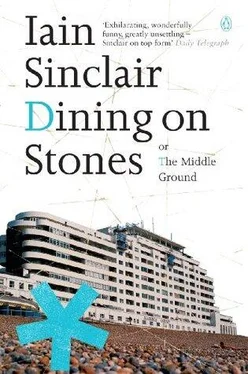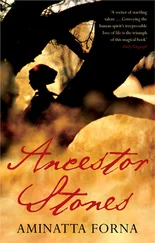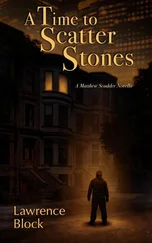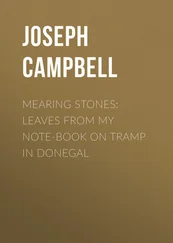At the end of the nineteenth century, as Livia (diligent student) appreciated, it was a very different game. The camera was part of the spectacle: visible apparatus wedged on its prongs, hydrocephalic, fixing time. Fixing: the Occasion. As unique, once-and-forever. The camera artist arranging his actors in poignant tableaux — in which they are invited to impersonate themselves. With heroic awkwardness and dignity. Self-consciously natural, hardly daring to breathe.
In the twilight, Woods walked back home (incomer), wife dead (breast cancer), living with his daughter at Mount Pleasant Road, on the heights above the Old Town. Chapel-going family. No question of a night shoot. Episodes of the afternoon, sun-blessed mornings. Quietly epic representations of the actual (contrived, unforced). The photographer was still a cancelled presence, without irony, no epiphanies, yet, of the instant (lightweight camera attached to head, one-eyed blink).
George Woods, gentleman. Fixed lens. Gleaming brass instrument. Human mass. Crowds going about their business. Which, in Hastings, as he represented it, was pleasure: watching others as they watched hawkers, peddlers, fishwives, performing dogs. As they were helped on and off boats. The black jackets. The hats. The polished boots.
Livia’s heel rubbed. Time to kill. She couldn’t, far too late, emulate Woods. Her abstractions — nocturnal beach as thread of green running towards black horizon, in which (after minutes of concentrated staring) pinpricks of boats might appear — would have mystified him. She had to hang about, waiting till the drinking schools dispersed, the last bonfire was extinguished. Therefore: she was tracked by naughty boys, cusp hormonals offering to carry the camera satchel. To place their hot, fast twigs in her mouth. Bracken-smelling yobs.
Darkness, which she relished, was tardy; confused by lagoons of artifice, neon, blinking signs, green-and-red spill on wet pavements. Arcades. The yawning mouths of pubs. Tarot and tattoo displays. The pier. It took hours for the town to shut down, cool off, decant. And, in that interval, Livia stalled, fumed, wave-watched. Like the others. She was distinguished only by the ferocity of her attention. Eyes burning. An addict of otherness. Connoisseur of the unsayable.
Incident .
Up among the layers and levels — narrow steps, skewed chimney pots, secret gardens, bowed fronts, terraces — Livia saw a hunched figure, early hours of the morning, pushing a funereal contraption the size of Mother Courage’s handcart. An ancient (non-antique) perambulator. A thing sitting in it, stiff but alert. A child. An infant. A doll .
Livia and the old woman pass. They meet again, in other parts of the town, at different watches of the night. The doll grows . The old woman must have a collection, rags for each of them. Routes to walk, never resting. C-shaped spine, warped like driftwood.
This narrative is too baroque. Livia photographs a single lightbulb, unshaded, visible through the thin curtains of a terraced house. Peach-coloured wardrobe. Candlewick bedspread.
Incident .
Drinkers (hypersensitive to the click of cameras) spot her. Invite her to join them, around the fire. They become aggressive, threatening, when she (waving) declines. One man follows her, shouting.
Photograph: blue searchlights casting a pyramid shape on the rounded stern of the Cunard Court flats.
Incident .
The dead hour, two or three in the morning, Livia needs to take a pee, positive discomfort. And, at the same time, feels pangs of hunger. Desire for coffee. Nowhere open. A gay club she doesn’t risk. Lurkers around every possible bush or concealed alley. A burger joint in a bad street. Five men upstairs. The toilet, reluctantly ceded, in an unlit basement at the foot of some narrow, rickety stairs. Heart beating. Stairs creak as one — more? — follow her down. To offer a fresh bar of carbolic soap, a clean towel.
Photograph: sodium light reflected in fissure of black limestone rock, its crumbling tobacco-cake texture.
After two months of minor nocturnal excitements, recounted in letters to Track, Livia found the pasta place on the seafront. Made it her base, straight from the train; food when she was flush, coffee; leave some of her equipment with Maria. ‘’Allo, darlin’.’ Avoid the baggy-featured man who stared at her with eyes like a sad walrus. She didn’t dislike him, or worry that he would do anything more than trail after her as she killed time in the late afternoons; she had to avoid dissipating her gaze, getting sidetracked into conversation. If he kept to his own territory, steady drinking, unsteady sexual fantasy, she could live with it. But she would not accept his seeing her seeing, the sprung paranoia she needed to achieve, before walking into the night.
Livia did not want, on any account, this arbitrary person with the books and the carafe, to register her with Marina Fountain. She hadn’t told Track, she hadn’t told anybody, about Marina. How they’d met. In the museum, the gallery. In front of the Keith Baynes seascape, in pastel, Harbour Scene with Yachts . Livia had an interest in Baynes. He’d lived in Hastings — St Leonards — in some sea-facing Thirties flats, and then in Warrior Square. Baynes delivered a Francophile panache that set him apart from the rest of the marine painters, the English topographers who liked nothing more, following Turner, than to gaze inwards , on shore, fishing boats, parade, cliffs.
Baynes hung out with the very louche Edward Burra, at Rye, picnics in the Rolls, sailor boys in striped vests. He was known to the Charleston mob, the Bloomsbury home-decorators and pond sculptors (prophetic of TV makeovers of the New Millennium, farmhouse furniture ruined with sticky things, stencils, daubs). Duncan Grant, Vanessa Bell. White-skinned naturists, readers in deckchairs. Bored literary celebrities between mistresses or boyfriends. Sneezing, under the South Downs, in dappled sunlight.
As life folded in on him, decrepitude, neglect, Baynes moved away from that vision of the sea, too much, too bright; he retreated to a cluttered room above the public gardens. No more of those heartbreaking recapitulations, View from My Window . Remedial. Convalescent. Gay. Forlorn. Signalling breakdown (like David Jones in Shoreham). Damaged Brits holed up at the seaside. Three panels of a window. A comfortable chair with three cushions. Yachts like clown caps. No middle distance . For Keith Baynes, there was never anything between here and there: a frieze, dance, a lively notation of the inessential, the debris of visual delight. He had money, private means, enough. A bottle under the bed. A window.
The charity shops of St Leonards had been good to Marina. The district specialised in them. Livia was dazzled, remarked on it, by how well the coast suited the older woman, bright eyes, clear skin, colour in the cheeks. Her outfit, blind-selected as ever, worked; pillbox hat (rudimentary veil), ice-cream-pink duffel coat, black boho turtleneck, very short blue-black suede skirt, green stockings, crumpled red boots. The wardrobe, listed, reads like a menu of alternatives for an Albanian sex slave in a Finsbury Park massage parlour. In the flesh, the woody quiet of the Hastings Museum, it played.
‘Lovely rings,’ Livia said.
On Marina’s long thin fingers, her thumb. Scarabs and twisted silver bands. Native American blue (the eyes of Lee Marvin). Coral. But her hands betrayed her, freckles and small brown stains.
‘Is that Estuary gangster still bothering you?’
‘It’s over,’ Livia said. ‘Haven’t seen Reo in yonks. He doesn’t know I’m down here. He’s not looking.’
Her fingers, teasing the new fringe, gave it away.
Читать дальше












